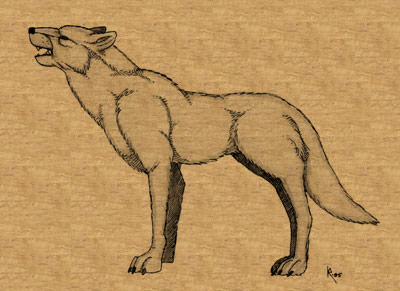![]()
| Other Names | Vuriken, Borrellian Hound, Snowpaw |
| Climate/Terrain | Subpolar Forest |
| Frequency | Uncommon |
| Organization | Group |
| Activity Cycle | Nocturnal |
| Diet | Carnivore |
![]()
Winter wolves are also known as borrellian hounds and snowpaws. The Borrellian word for the animal is Vuriken (it is the same plural and singular) . Winter wolves are very large, powerfully muscled polar wolves. They have thick white fur, bushy tails, black eyes and large feet.

![]()
Winter wolves attack much as regular wolves do. They attack in packs and lunge for vulnerable areas, such as the throat. A bite is their only means of attack.
![]()
Winter wolves live and hunt in packs in the Ice Rock Mountains. A strong relationship exists between the borrellians and winter wolves. The borrellians often claim vuriken pups and train them. Winter wolves make loyal pets and serve the borrellians well as guard dogs, hunting dogs, war dogs and even pack beasts. The borrellians prize these canines highly.
The name "winter wolf" is given to the animal by nations further to the south (Carrikos, Duthelm and Kitar). They were named so because winter wolves tend to venture further south, into those lands, in the winter. And so, they are only seen in those lands during the winter.
![]()
A winter wolf has a thick layer of fat over the muscles to help retain heat. It has excellent thermal vision. Its broad feet allow it to run over snow without sinking in. Winter wolves are extremely resistant to cold, but are very adversely affected by heat or flame.
![]()
This website was last updated April 30, 2025. Copyright 1990-2025 David M. Roomes.